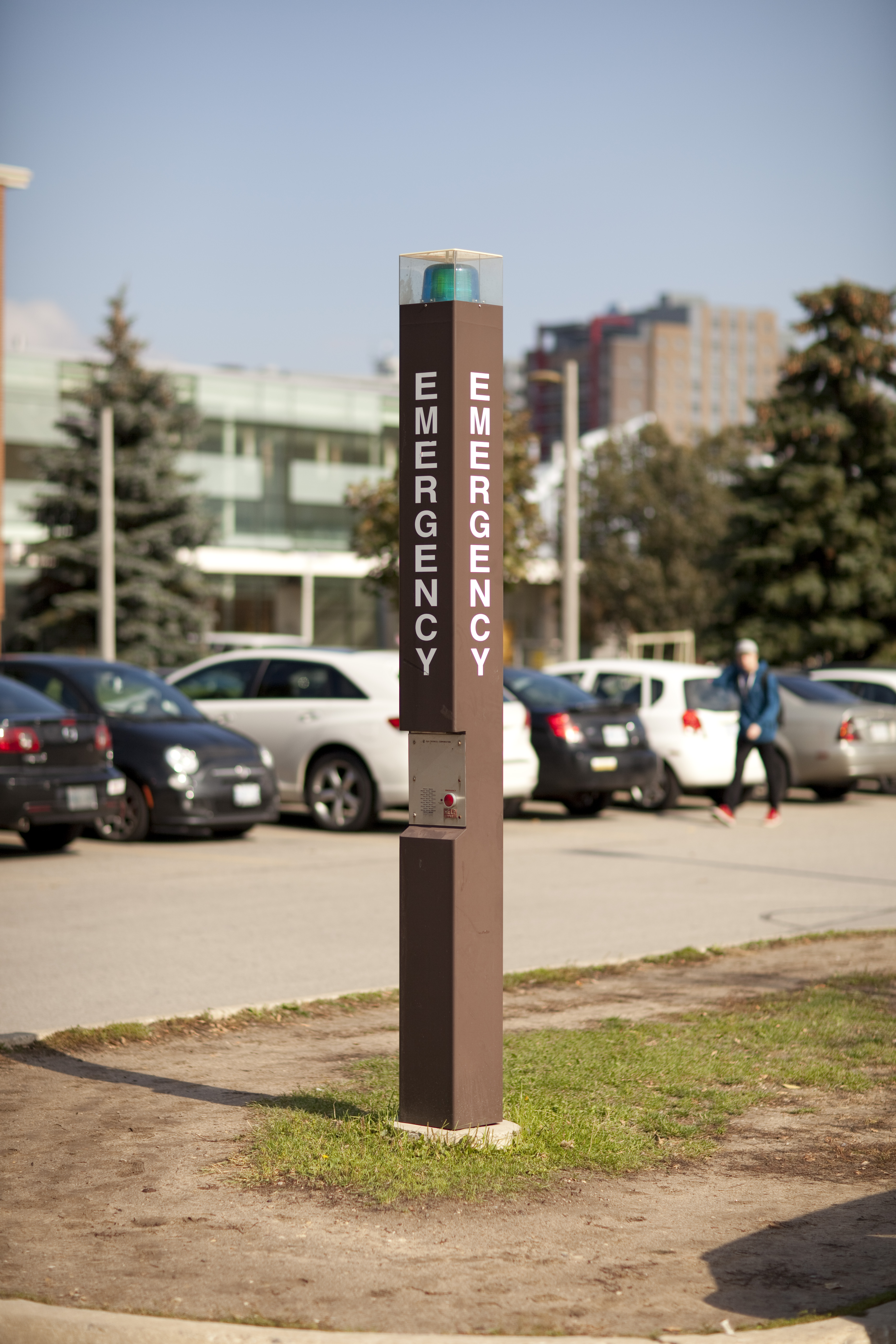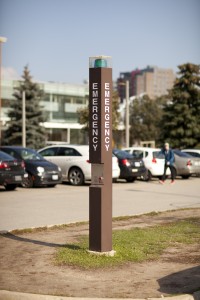Safety resources examined


“They’re just there. People say they’re there for your safety, but how does it work, how do you actually protect us?”
Gemerdine Maravilla, a third-year languages student at Wilfrid Laurier University, is talking about the emergency poles that are spread throughout Laurier’s campuses.
While she feels safety features such as these are good, she also believes there needs to be more education about how to use such resources.
According to Chris Hancocks, operations manager at Special Constable Services (SCS), there are around 20 poles at Laurier. This excludes call buttons located in all elevators, which are also considered emergency poles.
“They’re supposed to be used for emergencies,” explained Hancocks. “If there’s no other way that you can get a hold of us, you can use the emergency pole.”
The poles have a button which sets off an alarm at SCS, who then dispatches two officers to check out the location.
Students can also call for free from pay phones located around campus.
But most of the time, Hancocks noted, the poles are not used for emergencies.
“[They get misused] all the time, mostly the elevators. Then the emergency poles by Bricker Academic building on bar nights.”
Queen’s University has had similar problems in the past. In 2011, the emergency buttons were pressed in non-emergency situations nearly 320 times. In many cases, this was part of a drinking game.
Hancocks believes many universities have issues such as this, Laurier being no exception.
“It’s always been the same. People just hitting the button and thinking it’s funny and they just keep walking.”
But he believes that they are effective as long as they’re used properly.
“If there is one person that we can help, then it makes it all worth it. There’s no plans to take them out or anything like that.”
Overall, Hancocks said he’s satisfied with the level of Laurier’s safety, which he attributes to the “professionalism of [their] people.”
“The technology, yes it can catch things after the fact, but it’s the proactive nature of our officers that go out.”
He noted, however, that it is becoming more challenging as the campus continues to grow, in particular with several residences being located further off-campus.
Lauren Burrows, a coordinator at the Centre for Women and Trans People (CWT), believes that most students feel safe due to the small nature of the campus. She pointed out that in terms of gender-centered issues such as sexual assault, they’re more likely to happen between people who know each other and in private instances such as residences or a home.
“The way the campus climate is, is that if you’re just talking about physical safety and not talking about the culture of the school in general … it’s fairly physically safe,” she said.
But according to Burrows, though the poles are valuable, they only address a particular kind of emergency.
“The poles are only good for a certain type of violence, which is immediate — like someone got hurt. Someone got punched in the face, someone had a seizure.”
“I think the biggest thing is that people don’t know where they are and don’t know what they’re for,” said Cat MacEachern, another CWT coordinator.
Brandon Lockyer, a third-year sociology student, agreed, expressing that there needs to be more education about the poles and other safety services on campus.
“I haven’t even noticed the poles,” he said. “I’ve seen them, but I’ve never wondered what they’re for.”
While Catherine McKenzie, a third-year sociology student, says she feels safe when she’s on campus she feels there are not enough of them.
“When you look around, they’re kind of far. If you’re actually in trouble, you would have to run a long ways to get to one.”


